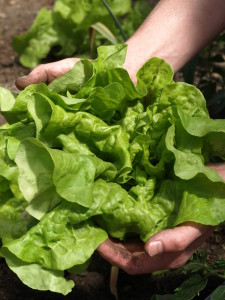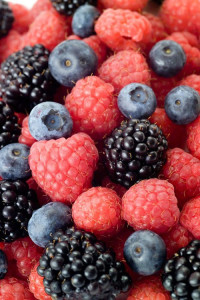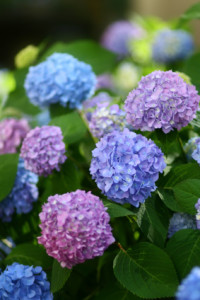Let Us Grow Lettuce
 Let Us Grow Lettuce
Let Us Grow Lettuce
There are many different types of lettuce, but all of them do best in cool temperatures, between 45 and 75 degrees—well suited for Spring and Fall weather. Many gardeners plant several kinds of lettuce at intervals throughout the growing season to enjoy a steady harvest with variety.
Lettuce Begin
Spring lettuce in 5 easy steps
- Plants or Seeds? Some gardeners do both and start seeds indoors ahead of time. To learn how, see our seed starting primer. Seeds can go directly in the ground about two weeks before your typical last Spring frost date.
- Prepare the Soil. Keep location in mind,as lettuce likes full sun. If you’re using a container, select a high-quality potting media, such as Espoma Potting Mix. In the garden, till or work the soil to about 4” to 6” deep and fortify it by mixing in a rich, organic garden soil like Espoma Organic Vegetable & Flower Garden Soil and plant food such as Garden-tone®.
- Plant. Transplant seedlings as early as the ground can be worked, or plant seeds according to instructions on the package. Space plants roughly 8” apart and kick-start seedlings with a shot of Garden-tone ten days after planting. Keep an eye on the temperature until frost danger has passed. Seedlings can survive 20-degree temps if protected by a little sheet of plastic.
- Water. Depending upon rainfall, lettuce needs a deep watering once per week. Mulching with some straw will help conserve moisture.
- Enjoy! Lettuce types mature at different rates, but you can harvest lettuce as soon as leaves form. Trim heads off at the base, or just trim off the outer leaves on loose-leaf, if you’d like to keep plants going longer.
Choose your Lettuce
(it’s not ready to pick yet) The type of lettuce you select will fall into one of 5 categories:
- Loose leaf – Like the notebook. These grow in clusters of leaves instead of a head.
- Butterhead – But you probably know it as Bibb or Boston. Small, tender heads with loose outer leaves offer a mild, pleasing flavor.
- Crisphead – Sounds more like a heavy- metal band, but it’s an accurate description. Think iceberg – round, crunchy heads that keep well in the fridge.
- Romaine – Sturdy vertical heads with crisp, nutritious dark leaves and white hearts.
- Batavian – If this was a dress, your mom wouldn’t let you wear it. These loose and sexy spiral heads have shiny, sometimes frilly leaves that can range from deep green to red.
This year, give Spring lettuce a try. It’s a great way to spring into the gardening season — and the perfect way to get a head!

 Let’s run through a berry quick overview to help you decide which berry to grow.
Let’s run through a berry quick overview to help you decide which berry to grow. There are very few plants that you, the gardener, can actually choose the color you want them to be in your garden. Hydrangeas happen to be one of them. With some simple amendments to our soil, you can choose between making the blooms blue or pink. And while it doesn’t happen overnight, the magical blooms are well worth the wait!
There are very few plants that you, the gardener, can actually choose the color you want them to be in your garden. Hydrangeas happen to be one of them. With some simple amendments to our soil, you can choose between making the blooms blue or pink. And while it doesn’t happen overnight, the magical blooms are well worth the wait!
